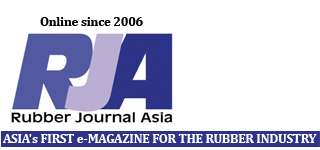The specter of elevated tariffs on consumer tyres from China starting next year already is distorting the normal supply-and-demand relationship in the US aftermarket as distributors have started stepping up their orders from China, Goodyear Chairman Rich Kramer told analysts Oct. 29 during a conference call.
As a result of what Mr. Kramer called “an unprecedented wave of speculative buying,” many distributors have purchased a “considerable portion” of their 2015 budget this year “and now have stockpiles of low-end tyres to sell.”
Mr. Kramer attributed at least some of this accelerated buying to the possibility of the tariffs being made retroactive to October of this year.
“To get ahead of the impacts of the potential tariffs,” he said, “dealers and distributors increased their purchases of Chinese tyres in multiples of their normal purchase volumes and made significant investments to build inventory.”
As support for his contention, Mr. Kramer cited Rubber Manufacturers Association data showing that a 3-percent increase in industry tyre shipments in the third quarter was driven by a 25-percent jump in imports from China.
“To get ahead of the impacts of the potential tariffs, dealers and distributors increased their purchases of Chinese tyres in multiples of their normal purchase volumes and made significant investments to build inventory.” — Goodyear Chairman Rich Kramer
“When adjusted for those imports, we estimate that the industry demand for other tyres would have declined about 4 percent in the quarter,” he said.
Mr. Kramer explained the anomaly in part to provide context for Goodyear’s 4-percent drop in North American shipments.
He said the pre-buy activity ahead of tariffs being considered now — which won’t occur until mid-2015 — is more significant than that which occurred ahead of the elevated tariffs that were implemented in September 2009.
Mr. Kramer also pointed out that the reported industry shipments are “sell-in” data — that is, industry to industry — and that “sell-out” shipments to consumers are growing at about 1 to 2 percent this year, with similar growth expected in 2015 as well.
Although Goodyear does not “prioritize sales at the low end of the market,” Mr. Kramer said, Chinese imports do affect the Akron-based tyre maker’s sales since the increased shipments occupied an “abnormal amount of physical inventory space” at the expense of some Goodyear’s own mid-tier-branded products and because these shipments reduce customers’ liquidity.
Faced with these “distorted” market conditions, Goodyear didn’t vary from its stated strategy, Mr. Kramer said.
“…(W)e didn’t chase unprofitable volume, and we’re not in the business of making tyres to sit in customers’ warehouses for extended periods, and we didn’t sell next year’s tyres at discounted prices today.”
By sticking with its strategy, he added, Goodyear was able to deliver record segment operating income of $210 million in the third quarter, the second straight quarter with an operating margin of more than 10 percent, and improved the price mix versus raw materials over that reported in the second quarter.
When asked, Mr. Kramer declined to speculate on what the imposition of elevated tariffs might to do to aftermarket pricing, saying only what happened in 2009-10 amid the tariffs then could be used a benchmark.

